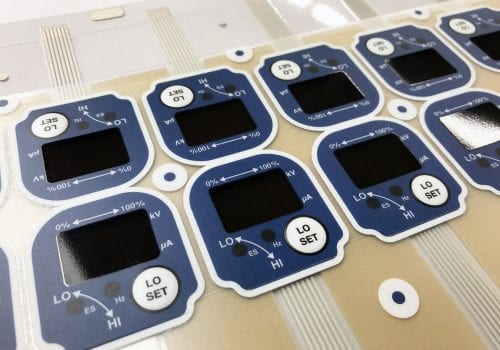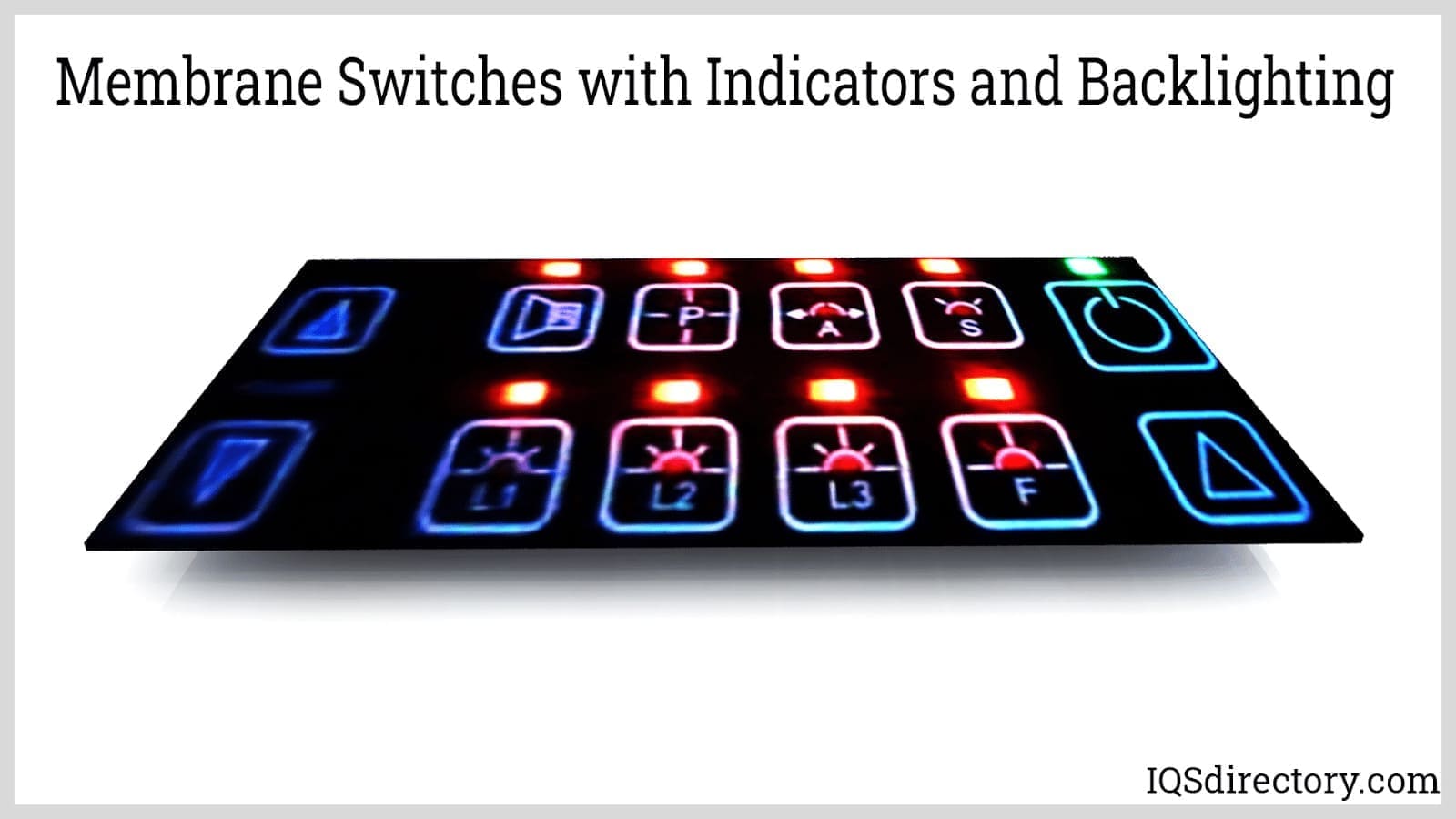Recognizing the Importance of Membrane Layer Change in Modern Electronics
Membrane layer buttons are integral elements in modern electronic tools. They provide a blend of functionality and design that boosts user interaction. Their durable and light-weight nature makes them ideal for different applications. As industries advance, the demand for modification and advanced functions expands. Comprehending how membrane changes add to technology discloses their significance in shaping the future of electronics. What exists in advance for this modern technology?
The Basics of Membrane Change Modern Technology
Although often overlooked, membrane layer button modern technology plays a vital function in the modern-day electronic devices landscape - membrane switch. These tools, composed of multiple layers, offer as interface for different electronic products, ranging from family home appliances to clinical devices. A common membrane layer switch is composed of a visuals overlay, a spacer layer, and a circuit layer, which are carefully constructed to develop a practical interface.When stress is related to the overlay, the circuit layer is finished, permitting signals to be sent to the tool. This innovation is understood for its adaptability, allowing modification in style, form, and capability to meet specific user needs. Additionally, membrane switches are slim and lightweight, making them suitable for applications where space is a costs. Their durability and resistance to ecological elements additionally improve their allure, ensuring they can withstand severe problems while maintaining functionality. Generally, membrane layer switch modern technology is essential to creating reliable and user-friendly electronic tools

Key Advantages of Membrane Layer Changes
Membrane switches over deal numerous crucial benefits that make them a favored selection in various electronic applications. Their style enables a portable type element, enabling suppliers to produce smooth and lightweight gadgets. In addition, membrane layer buttons are immune to dirt, dampness, and chemicals, which improves their sturdiness and long life popular settings. The responsive feedback supplied by these buttons can boost user experience, making them simple and intuitive to operate.Furthermore, membrane layer buttons can be tailored with diverse graphics and colors, allowing for special branding opportunities. The production procedure is usually cost-efficient, specifically for high-volume production, as it decreases assembly time and simplifies layout. Finally, membrane layer changes require marginal upkeep, adding to lower general functional expenses. These advantages emphasize their growing appeal in modern electronic devices, where dependability and user-friendly interfaces are necessary.

Applications Throughout Different Industries
The convenience of membrane layer changes allows their extensive fostering across different markets. In the medical field, they are frequently made use of in analysis equipment and client surveillance systems, using a resilient interface immune to pollutants. The vehicle industry utilizes membrane buttons for dashboard controls, boosting individual experience with streamlined layouts that endure extreme problems. In customer electronic devices, they function as control board for devices such as microwaves and coffee machine, providing a straightforward user interface that is very easy to tidy. The aerospace field uses membrane buttons in cockpit controls, where integrity and room effectiveness are paramount. In addition, the commercial sector leverages these switches in machinery and control systems to assure robust operation popular atmospheres. This wide series of applications highlights the versatility of membrane layer switches, making them important parts in boosting performance and individual communication throughout varied technological landscapes.
Customization and Style Versatility

Future Patterns in Membrane Layer Switch Growth
Emerging trends in membrane layer button advancement suggest a growing focus on boosted functionality and combination with smart modern technologies. As consumer demand for a lot more advanced electronic devices increases, producers are focusing on producing membrane switches over that not only offer standard functional roles but also include functions like touch sensitivity, backlighting, and haptic feedback.Furthermore, innovations in products are expected to improve toughness and ecological resistance, making membrane layer changes appropriate for varied applications in industries such as health care, vehicle, and customer electronics. The assimilation of capacitive touch technology is most likely to become much more widespread, enabling for sleeker styles and improved individual interfaces. membrane switch.Additionally, the surge of the Internet of Points (IoT) is motivating the advancement of membrane switches over that can communicate wirelessly with other devices, boosting interconnectivity. In general, the future of membrane layer switch technology shows up appealing, driven by innovation and the quest of straightforward options
Often Asked Concerns
How Do Membrane Layer Changes Compare to Conventional Mechanical Buttons?
Membrane layer switches, being a lot more space-efficient and providing a sleek style, comparison with standard mechanical buttons that supply responsive feedback. The former usually include customizable graphics, while the latter typically guarantee durability and integrity in various applications.
What Products Are Frequently Used in Membrane Layer Switch Over Production?
Membrane layer switches are normally created making use of products such as polyester, polycarbonate, and printed conductive inks. These products give durability, adaptability, and responsiveness, making them appropriate for numerous applications in electronic devices and interface.
Can Membrane Layer Switches Over Be Fixed or Recycled?
Membrane buttons can often be repaired, especially if small issues arise, such as sticky failing or surface area damage. Full reuse is usually restricted due to use and possible destruction of products over time.
How Do Ecological Factors Influence Membrane Change Performance?
Ecological elements, such as temperature level, moisture, and direct exposure to chemicals, considerably affect membrane layer switch performance. Extreme problems can cause destruction, influencing responsiveness and longevity, eventually jeopardizing the performance of the tool in numerous applications.
What Is the Regular Life-span of a Membrane Layer Switch over?
The regular lifespan of a membrane layer switch normally varies from 1 to 5 million actuations, depending on elements such as use regularity, environmental problems, and the products used in manufacturing, impacting resilience and performance long life. A normal membrane layer switch is composed of a graphic overlay, a spacer layer, and a circuit layer, which are thoroughly put together to develop a practical interface - membrane switch.When pressure is applied to the overlay, the circuit layer is finished, enabling signals to be transmitted to the device. The responsive feedback offered by these buttons can enhance individual experience, making them easy and instinctive to operate.Furthermore, membrane layer buttons can be personalized with diverse graphics and colors, permitting for unique branding opportunities. As consumer need for more innovative digital gadgets rises, suppliers are focusing on producing membrane switches over that not only offer basic functional duties but additionally integrate functions like touch level of sensitivity, backlighting, and haptic feedback.Furthermore, innovations in products are anticipated to improve longevity and ecological resistance, making membrane changes appropriate for diverse applications in markets such as medical care, auto, and consumer electronics. The assimilation of capacitive touch technology is most likely to come to be much more widespread, allowing for sleeker layouts and boosted user check over here interfaces.Additionally, the rise of the Net of Points (IoT) is prompting the development of membrane layer switches over that Recommended Reading can interact wirelessly with various other devices, boosting interconnectivity. Membrane switches, being more space-efficient and using a sleek style, contrast with conventional mechanical buttons that offer tactile comments